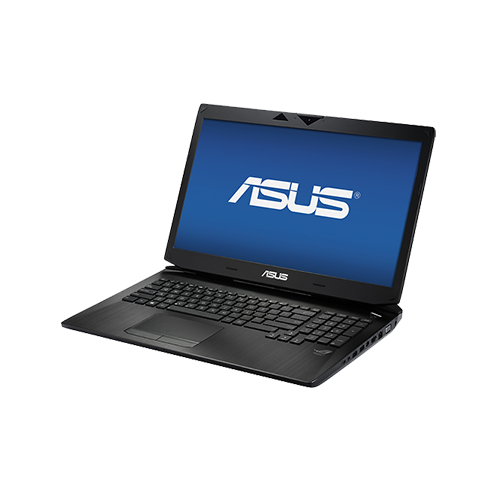
Asus laptop battery not charging
Asus Laptop Battery not Charging
The battery is the most vital part of a laptop. It is the powerhouse of the laptop giving the power to entire components of the system. Failing of the battery leads to the shutting down of the entire system and results in failure to perform any kind of operations on your system. Millions of Asus laptop owners around the globe face the infuriating situation of Asus laptop battery not charging. If you too own an Asus laptop then the problem of Asus laptop battery not charging can be a real headache for you. But worry not, The FIX is here with this guide describing how to tackle this problem.
 Remove and reinsert the battery
Remove and reinsert the battery
If you are having an issue with your Asus laptop and its battery is not charging, then you should try the following steps:
- Switch on your Asus laptop with the battery inserted and the AC adapter plugged in
- Locate and open Power Options in Windows
- Switch off the laptop
- Take out the laptop’s battery
- Wait for a couple of minutes and then insert the battery back inside the laptop.
- This is supposed to make the laptop’s power hardware recognize the battery again, and its status should now appear as “Battery charging” from the Power Options.
Asus Laptop Battery Showing “Plugged in, not charging
At times it so happens that the battery is recognized but the battery status is displayed only as “Plugged in, not charging”. To solve this issue, follow the steps given below:
- Unplug the AC adapter from the laptop.
- Shut down the Asus laptop
- Remove the battery
- Plug in AC Adapter and switch on the laptop.
Asus laptop battery not charging
Now we need to Remove Microsoft ACPI-Compliant Control Method Battery. To do so:
- Click on START then navigate to > Control Panel > Devices and Printers > Admin PC > Hardware
- Once you are there, select Microsoft ACPI-Compliant Control Method Battery
- Click on Properties > Change Settings > Driver > Uninstall > OK
- Your battery driver will be uninstalled
- Now shutdown the laptop
- Remove the AC Adapter
- Reinsert the battery
- Plug in AC Adapter and then switch on the laptop and let Windows to boot
- The battery status should now be displayed as, “Plugged in and charging”
Try updating the system BIOS
If you have the problem of Asus laptop battery not charging, then the problem may be with the system’s BIOS. An update will fix it and allow the laptop to recognize and fully charge the laptop battery. By default, the software in your computer is set up to read only a high-quality battery. If you have recently replaced your battery and your laptop’s BIOS has not been updated, and you have previously only used high-quality batteries in your laptop, then the BIOS can cause the new replacement battery to not communicate correctly with the software of your system.
To update the BIOS, check Asus’ website for any possible system BIOS upgrades for your laptop model. After completing the BIOS upgrade, it is advised to recharge your laptop battery for 12 hours and then continue to use as normal.
These steps can be taken to solve your problem of Asus laptop battery not charging. If these methods did not work for you then you should directly come over to your nearest The FIX store with your Asus laptop to seek professional assistance for your Asus laptop battery not charging issue. The expert technicians at The FIX will be more than happy to help you out and eradicate your problems.
The Effect of Operating System on ASUS Laptop Batteries
Laptop batteries vary by brand, model, battery technology and MAH value, but on average, they perform their tasks for up to two hours without problems. Programs used, games played, or performance level, in short, affects the battery’s resistance. What is not affected by all this is whether the battery is charged.
If your ASUS laptop battery not charging you should first look at it for how many years your laptop is. For devices that have been used for more than two years, it is normal for the battery to fully drain and not charge even if it is inserted. If a new ASUS laptop is involved, the operating system is one of the potential reasons.
Windows 10 is a very complex operating system. Although security is at the forefront, sometimes laptop batteries that are out of life due to software-related problems may seem as if they are completely exhausted.
Windows 10 prevents such batteries from charging, causing some common problems. If possible, the status of the battery should be checked by installing a second operating system (which can be any of the Linux distributions).
If the other operating system indicates that the battery is charging, the problem is that the ASUS laptop battery not charging Windows 10 or the ASUS battery not charging, which is a software problem.
ASUS Battery Does Not Charge in Other Operating System
If all the methods described in the other sections of the article have been tried but the battery still does not charge, search engine queries should be made based on brand and model. In this way, it can be easily determined whether the problem is a chronic problem or develops individually.
Here are some sample search queries for the ROG, G, and X models:
- ASUS G751J Battery not charging
- ASUS ROG battery not charging
- ASUS X551M battery not charging
You can get information about the solution methods by contacting the people who have experienced these problems before and if the repair is needed, you can get a firm recommendation.
TheFixSolutions respond to battery problems for all ASUS models including the ROG, G and X models.
Problems that arise due to incorrect charging periods due to intensive performance use, fluctuations in power lines, and so-called Asus battery plugged in not charging windows 10, Asus battery not charging when plugged in, and Asus battery plugged in not charging, usually requires professional assistance.
What is the scope of Professional Assistance?
TheFixSolutions handles ASUS batteries in two ways. The first method is to replace the battery completely, which is the most commonly used method. The measurements in the first examination are interpreted over the ampere values and the condition inside the LI-ON battery is determined.
From these determinations, it is determined whether there is a need for change. The second application is on the solution of problems arising from the flow chart, which is not directly caused by the battery. Sometimes such problems can arise due to the non-contact of a pin or cable.
